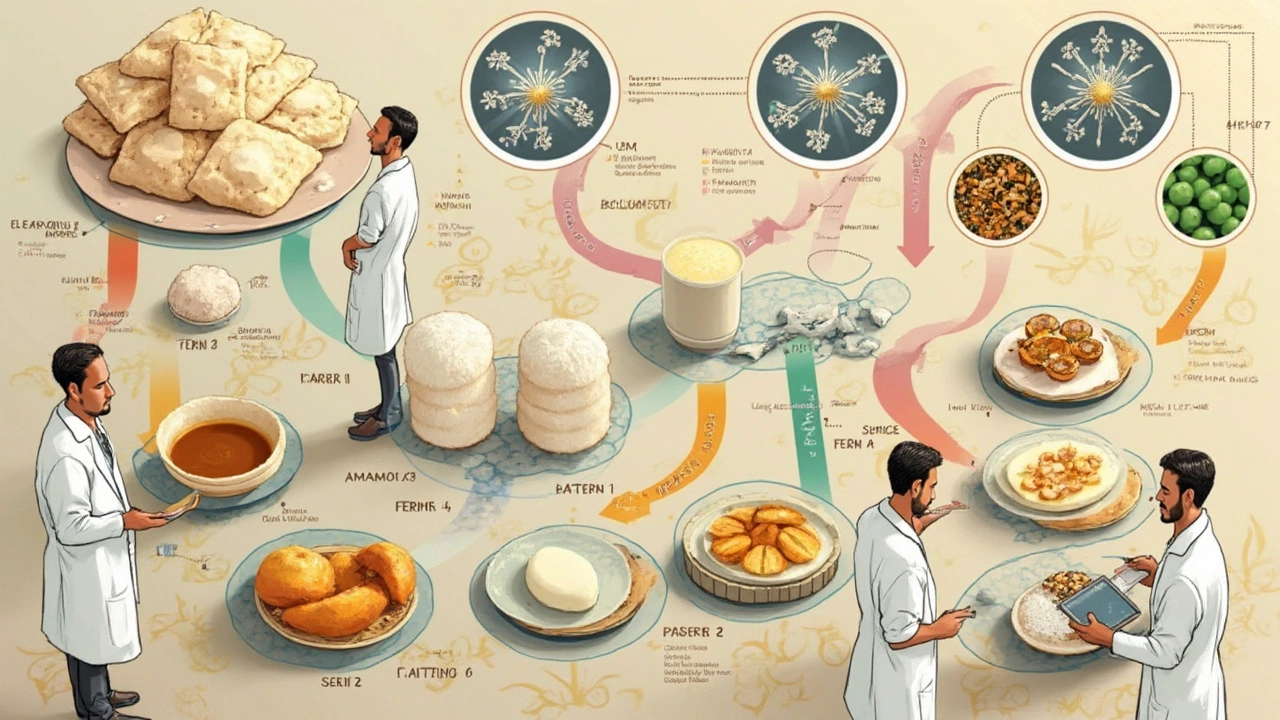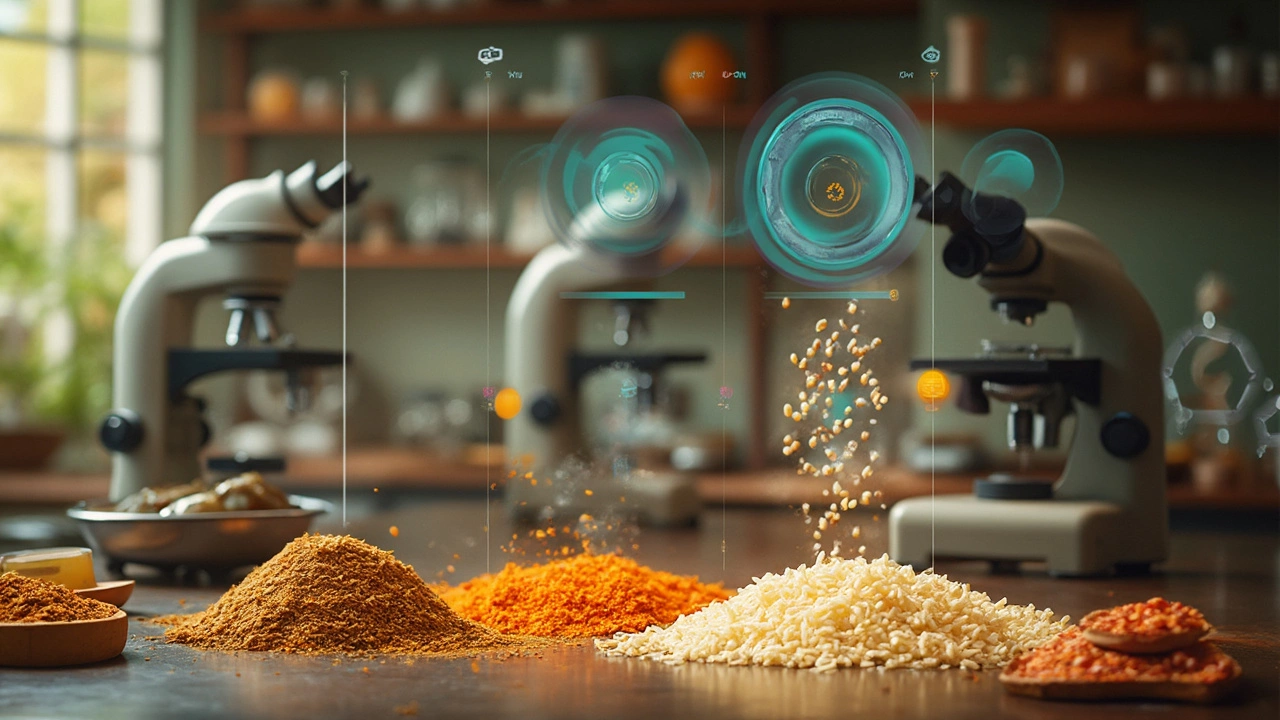If you’ve seen numbers like “5 μm” or “50 NM” on food processing equipment, you might wonder what they actually mean. When people talk about μm (micrometer) and NM (nanometer), they’re talking about seriously tiny measurements—way smaller than anything you’d see without a microscope. So, which is bigger? μm beats NM by a long shot: one micrometer (μm) is 1,000 times bigger than one nanometer (NM).
This isn’t just fun trivia; it has real impact in food processing. When companies talk about filters or grinders that work at the micron or nano scale, they’re fine-tuning how smooth, creamy, or safe a product can be. If your sauce needs to be silky smooth, understanding these units can tell you if a certain filter or mill will do the job. Picking the right size is about more than just numbers—it affects texture, taste, and safety in the food you eat every day.
- μm and NM: The Basics Explained
- How Small Differences Matter in Food Processing
- Real-World Examples in the Food Industry
- Choosing the Right Size for Quality Food
μm and NM: The Basics Explained
If you keep seeing the terms μm (micrometer) and NM (nanometer) on food processing gear, it’s easy to get tripped up. Here’s the straight talk: a micrometer (μm) is one-millionth of a meter, while a nanometer (NM) is one-billionth of a meter. That means a micrometer is a thousand times bigger than a nanometer. Put another way: 1 μm = 1,000 NM. If you stacked up a thousand nanometer-sized objects, you’d finally reach the size of a single micrometer object.
You’ll run into these units a lot with μm and NM ratings on filters, grinders, and processors in the food world. The labels let you know just how tiny the particles or contaminants are that the equipment is catching or crushing.
| Unit | Symbol | Size (in meters) | Common Use in Food Processing |
|---|---|---|---|
| Micrometer | μm | 0.000001 (10⁻⁶) | Standard filtration, homogenizers |
| Nanometer | NM | 0.000000001 (10⁻⁹) | Ultra-fine filtration, nano-emulsions |
Why does size matter? It’s simple: smaller measurements mean you can filter out or break down much tinier stuff. Some fats or bacteria are so tiny, normal filters can’t catch them, but nanometer-level equipment can. This is how processors can make milk super smooth or keep your juice free from harmful bugs without changing the flavor.
If you’re comparing products, keep this in mind: the bigger the number in microns, the less fine the process. Want a really smooth peanut butter? You’re looking for low micron or even nanometer processing. Need to block bacteria in juices? That’s nano-level filtration territory.
How Small Differences Matter in Food Processing
When it comes to food processing, size controls everything from texture to safety. People often underestimate how much getting the number right—whether we're talking 1 μm or 100 NM—changes the final product. Here’s why those small units are a big deal.
Take filtration, for example. If you're making fruit juice, you want to keep pulp out while letting flavor and nutrients through. Filters rated at 1 μm will trap particles like yeast and bacteria, but let juice flow easily. Want even cleaner results? Filters at the NM level, like 100 nanometers, start catching viruses and super-tiny molecules—stuff that can easily pass through a regular paper filter.
Homogenization, the process that makes milk creamy instead of watery, is all about breaking down fat globules. When processors reduce fat droplets to 2 μm or smaller, milk looks whiter and the cream doesn’t separate. Go smaller—even down to the NM scale—and products can stay stable for months without changing texture.
Here’s a quick comparison table to make things clear:
| Particle Size | Example in Food | Typical Processing Unit |
|---|---|---|
| ~5 μm | Yeast cells in fruit juice | Microfiltration |
| ~0.2 μm (200 NM) | Bacteria in milk | Ultrafiltration |
| ~50 NM | Casein micelles in cheese | Nanofiltration |
Why care about these numbers? Because using the wrong size can let in unwanted bacteria or ruin how a product feels in your mouth. People in the food industry choose their filtering or grinding units based on what they need to block or break down. For example, peanut butter gets its extra-smooth feel when the grinding step goes down below 10 μm. Chocolate becomes silkier when its cocoa particles are milled to 20 μm or less—coarser and it’ll feel grainy.
- If you want better shelf life, use finer filtration to block tiny spoilage bugs.
- For a smoother product, pick equipment that breaks particles down into single-digit microns or even nanometers.
- Don’t overdo it—sometimes too fine makes cleaning a hassle or strips away good flavors.
So next time you see “μm” or “NM” on the label, you’ll know these aren’t random science numbers—they’re what separate premium foods from average ones. Understanding μm vs NM is a small detail that makes a giant difference on your plate.

Real-World Examples in the Food Industry
If you’re still not sure why these tiny units matter, just look at how food companies use them every day. Filters, mills, and sieves are designed around exact sizes to get the job done right. Even a small tweak in particle size can change a product’s texture, shelf life, or food safety.
Take milk processing as an example. When milk is homogenized, the fat globules are broken down to about 1-2 μm, so everything stays smooth and blends better. That’s why cream doesn’t separate from your milk in the fridge. In juice clarification, microfiltration systems often use membranes that filter out particles down to 0.2 μm, which removes unwanted cloudiness and bacteria while keeping flavor in.
On the other end of the scale, nanometer-sized emulsions are used in things like salad dressings and chocolate. These nanoemulsions can reach down to 50-200 NM, making the product ultra-smooth and stable. Fun fact: Food researchers in Japan found that chocolate processed to a particle size under 500 NM not only feels silkier but melts quicker on your tongue—making the taste pop.
- Beverage companies use micron-level filtration (like 0.45 μm) to remove bacteria and yeast, keeping products safe and fresh longer.
- Bakery mixers use sifters down to 75 μm to give flour that super fine, smooth feel—leading to lighter cakes.
- Some dairy products, especially high-protein shakes, use nano-sized casein particles (less than 100 NM) for better mixing and a creamier mouthfeel.
Here’s a quick look at some common uses and their typical sizes:
| Process | Typical Size Range | Product Example |
|---|---|---|
| Microfiltration | 0.1 – 5 μm | Clarified juice, filtered milk |
| Homogenization | 1 – 2 μm | Milk, cream |
| Nanoemulsions | 50 – 200 NM | Salad dressing, chocolate |
| Flour Sifting | 75 μm | Finely milled flour |
So next time you check a nutrition label or wonder why your favorite drink is so smooth, remember: the tech behind it depends on picking the right size—sometimes by a factor of a thousand.
Choosing the Right Size for Quality Food
Picking between μm and NM isn’t just about splitting hairs. The size you choose for grinding, filtering, or blending directly changes how your food feels and even how long it lasts on the shelf. In industry, using the right measurement can make the difference between gritty peanut butter and the super-smooth stuff everyone loves. It also has a big say in how safe the product is—think about how bacteria can be filtered out using membranes with tiny holes measured in μm or even NM. Too large, and dangerous bugs slip through; too small, and the process slows down or clogs up equipment.
Check out this table with food examples and where size matters:
| Product | Process | Typical Size (μm or NM) | Why It Matters |
|---|---|---|---|
| Milk (Homogenization) | Break fat globules | 1-2 μm | Smoother milk, stable shelf life |
| Peanut Butter | Grinding peanuts | 10-20 μm | No grit, spreads smoothly |
| Filtered Water | Membrane filtration | 50-200 NM | Removes bacteria and viruses |
| Protein Isolates | Spray drying | 0.1-10 μm | Fine powder dissolves fast |
The trick is not to go ultra-fine just for the sake of it. Smaller isn’t always better. Sure, going smaller can improve texture or filtration, but it can also wreck efficiency, overload equipment, and drive up costs. If you’re looking at a new mill or filter, start by matching size requirements to what you want—smooth structure or maximum safety. Then check that your production lines aren’t getting bogged down because you’ve picked a filter that’s too fine and clogs quickly.
- For drinks and sauces, 1-10 μm is usually the sweet spot for creamy consistency.
- If safety is at stake (like in baby formula or sterile juice), filters around 50-200 NM can catch nasty bugs while still keeping things flowing.
- Want powder that mixes quickly? Keep particles in the lower single-digit μm range.
Baseline: don’t guess your units. The right pick saves money, boosts product quality, and keeps people safe. And it’s always worth a quick double-check—because in food processing, even the tiniest unit makes a massive difference.
